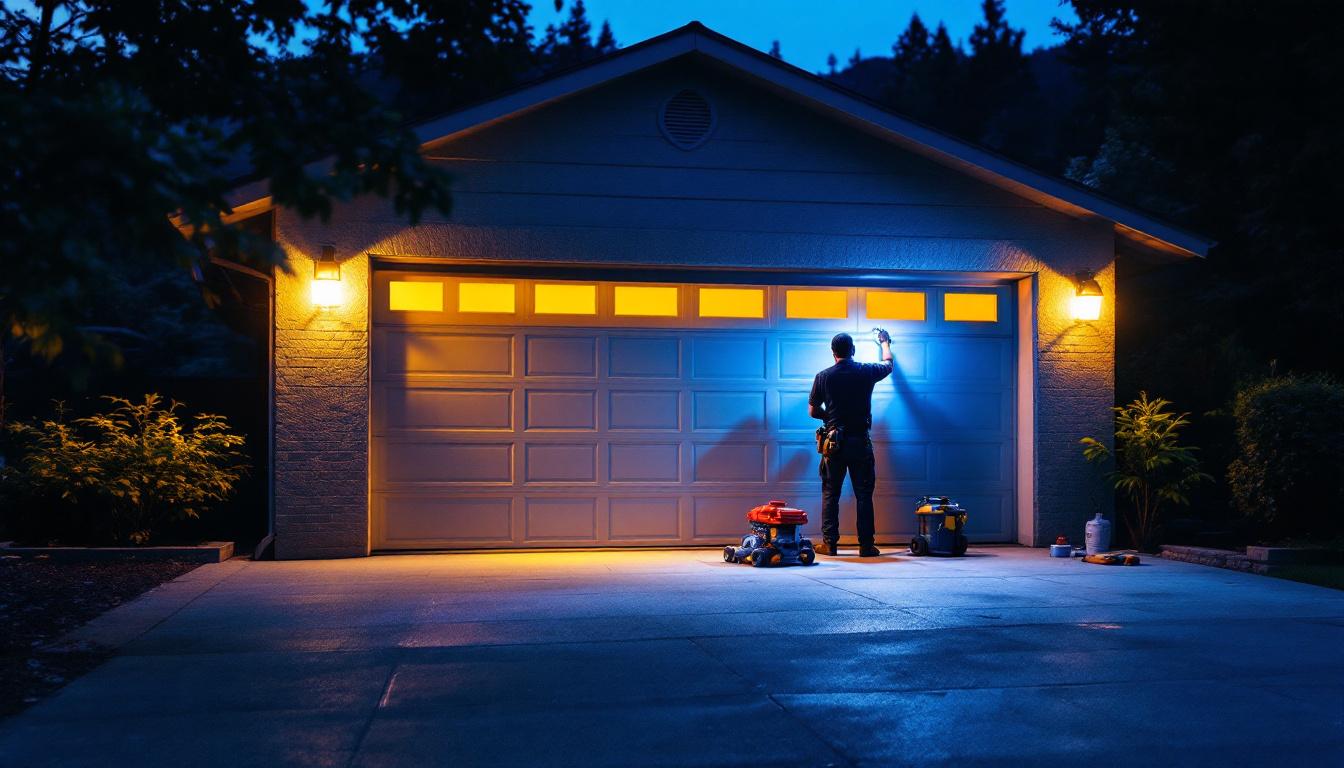
In the ever-evolving world of lighting technology, the transition from traditional fluorescent lighting to LED lights has become a pivotal topic for lighting contractors. As businesses and homeowners seek more energy-efficient and cost-effective solutions, understanding the benefits and drawbacks of LED lights compared to fluorescent and other alternatives is essential for making informed decisions. This article delves into the advantages of LED lights, compares them with fluorescent options, and explores other alternatives available in the market.
One of the most compelling reasons for the shift towards LED lighting is its remarkable energy efficiency. LEDs consume significantly less power than fluorescent lights, often using up to 75% less energy. This reduction in energy consumption not only lowers electricity bills but also contributes to a smaller carbon footprint, making LEDs an environmentally friendly choice. As cities and businesses increasingly prioritize sustainability, the adoption of LED technology aligns perfectly with global efforts to combat climate change and reduce reliance on fossil fuels.
Moreover, LED lights boast an impressive lifespan, often lasting 25,000 to 50,000 hours compared to the 7,000 to 15,000 hours typical of fluorescent bulbs. This longevity means fewer replacements, reducing maintenance costs and labor for lighting contractors. The combination of energy savings and extended lifespan translates into a more sustainable lighting solution for clients. In commercial settings, this can lead to significant operational savings over time, allowing businesses to allocate resources to other critical areas. Furthermore, the durability of LEDs makes them less prone to breakage, which is particularly advantageous in high-traffic or industrial environments where lighting fixtures are subject to wear and tear.
Another factor that sets LED lights apart from fluorescent options is the quality of light they produce. LEDs offer a more consistent and higher-quality illumination, with a range of color temperatures available to suit various applications. Unlike fluorescent lights, which can flicker and produce harsh lighting, LEDs provide a steady, comfortable light that enhances visibility and aesthetics in any space. This consistency not only improves the ambiance but also reduces eye strain, making LED lighting a preferred choice for offices and educational institutions where prolonged exposure to artificial light is common.
Additionally, LEDs are available in a variety of color rendering indexes (CRI), allowing contractors to choose lights that accurately represent colors in their intended environment. This feature is particularly important in settings like retail spaces, art galleries, and restaurants, where the quality of light can significantly impact customer experience. For instance, in a restaurant, warm white LED lights can create an inviting atmosphere that encourages diners to linger, while in a gallery, high CRI LEDs can bring out the true colors and details of artwork, enhancing the overall appreciation of the pieces on display. The versatility of LED lighting ensures that it can be tailored to meet the specific needs of any environment, making it a game-changer in the world of illumination.
While LED lights are gaining popularity, fluorescent lighting still has its place in certain applications. One of the main advantages of fluorescent lights is their lower initial cost. For contractors working with tight budgets, fluorescent options can be more affordable upfront, making them an attractive choice for projects where budget constraints are a primary concern.
Fluorescent lights also provide a decent light output and can be effective in large spaces, such as warehouses and factories. Their ability to illuminate wide areas makes them suitable for environments where high-intensity lighting is required without the need for extensive installation of multiple fixtures.
Despite their advantages, fluorescent lights come with several drawbacks that contractors should consider. The most significant issue is their energy inefficiency compared to LEDs. Over time, the lower energy consumption of LEDs can lead to substantial savings, making them a more cost-effective choice in the long run.
Additionally, fluorescent lights contain hazardous materials like mercury, which poses environmental and safety concerns during disposal. This factor can complicate waste management and increase the overall environmental impact of using fluorescent lighting. In contrast, LED lights are free from such hazardous materials, making them a safer choice for both installers and end-users.
Compact fluorescent lamps (CFLs) are often viewed as a middle ground between traditional fluorescent lighting and LED technology. They are more energy-efficient than standard fluorescent bulbs and offer a longer lifespan. However, CFLs still contain mercury and have a relatively longer warm-up time compared to LEDs, which can be a drawback in applications requiring immediate brightness.
For contractors, CFLs may be suitable for residential applications where initial costs are a concern, but they are generally not recommended for commercial or industrial settings where performance and efficiency are paramount. The gradual shift towards LED lighting makes CFLs a less favorable option in many cases.
In recent years, smart lighting solutions have emerged as an innovative alternative to traditional lighting systems. These systems often incorporate LED technology and offer features such as remote control, dimming capabilities, and automated scheduling. Smart lighting can enhance energy efficiency by allowing users to customize their lighting needs based on specific activities or times of day.
For lighting contractors, integrating smart lighting solutions into projects can provide added value to clients. However, it is essential to ensure that the chosen smart lighting systems are compatible with existing infrastructure and can be easily installed without extensive retrofitting. As the demand for smart technology continues to grow, staying informed about the latest advancements is crucial for contractors looking to remain competitive.
When selecting lighting solutions, the specific application and environment play a critical role. For instance, commercial spaces such as offices, retail stores, and warehouses may require different lighting strategies based on their unique needs. Understanding the intended use of the space will help contractors make informed choices that align with client expectations.
In environments where color accuracy is vital, such as art studios or showrooms, the superior color rendering of LED lights makes them the ideal choice. Conversely, in areas where budget constraints are a primary concern, fluorescent or CFL options may be more suitable, albeit with the understanding of their limitations.
Cost is often a significant factor influencing the choice of lighting solutions. While LED lights may have a higher initial purchase price, their long-term savings through reduced energy consumption and lower maintenance costs can make them a more economical choice over time. Contractors should conduct a thorough cost-benefit analysis to present clients with a clear understanding of the financial implications of their lighting choices.
Additionally, it is essential to consider potential rebates or incentives available for energy-efficient lighting upgrades. Many utility companies and government programs offer financial incentives for switching to LED lighting, which can further enhance the cost-effectiveness of these solutions.
As technology continues to evolve, LED lighting is expected to undergo further advancements. Innovations in LED design, such as improved efficiency, enhanced color rendering, and increased adaptability, will likely shape the future of lighting solutions. These advancements will provide contractors with even more options to meet the diverse needs of their clients.
Moreover, the integration of smart technology with LED lighting is anticipated to become more prevalent. As smart home and building automation systems gain traction, the demand for LED lights that can seamlessly integrate with these technologies will increase. Contractors who stay ahead of these trends will be better positioned to offer comprehensive lighting solutions that meet modern demands.
With growing awareness of environmental issues, sustainability has become a crucial consideration in lighting design. LED lights are inherently more sustainable due to their energy efficiency and lack of hazardous materials. As clients increasingly prioritize eco-friendly solutions, contractors must be prepared to advocate for LED lighting as a responsible choice.
Furthermore, the focus on sustainability is driving the development of circular economy practices in the lighting industry. This includes initiatives to recycle and repurpose old lighting fixtures, reducing waste and promoting a more sustainable approach to lighting design. Contractors who embrace these practices can enhance their reputation as environmentally conscious professionals.
In conclusion, the decision to replace fluorescent lighting with LED lights or other alternatives involves careful consideration of various factors, including energy efficiency, cost, application, and environmental impact. While fluorescent lights may still have a place in certain applications, the numerous advantages of LED lighting make it a compelling choice for lighting contractors looking to provide their clients with the best possible solutions.
As the industry continues to evolve, staying informed about the latest trends and innovations will be essential for contractors. By embracing LED technology and understanding the broader landscape of lighting alternatives, contractors can position themselves as trusted advisors in the quest for effective and sustainable lighting solutions.
Ultimately, the choice of lighting should align with the specific needs of each project, ensuring that clients receive the best value and performance from their lighting investments. Whether opting for LED lights, exploring other alternatives, or integrating smart technology, lighting contractors play a vital role in shaping the future of illumination.
As you consider the future of lighting for your projects, choose a partner that offers the best in LED technology and smart lighting solutions. At LumenWholesale, we provide lighting contractors with spec-grade lighting products that meet the highest industry standards. Our commitment to quality, affordability, and convenience ensures that you can equip your projects with energy-efficient, cost-effective lighting without the hassle of inflated markups or hidden fees. Take advantage of our unbeatable wholesale prices and free shipping on bulk orders to enhance your lighting installations. Discover wholesale lighting at the best value and make the switch to superior lighting with LumenWholesale today.

Discover essential tips and strategies for lighting contractors to navigate common challenges with Sunpark Electronics Lighting.

Discover the key challenges lighting contractors face when bypassing ballasts in lighting systems.

Discover innovative cost-saving strategies for lighting contractors in “Light Factory.” Learn how to optimize resources, reduce expenses, and enhance project efficiency without compromising on quality.

Discover what sets top lighting contractors apart in outdoor garage lights LED installation.